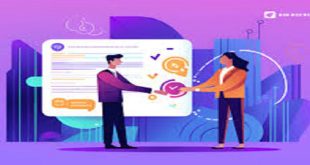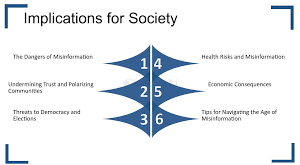Digital Twins: From Physical to Virtual World
Digital twins are changing industries-the way we format, screen, and manipulate bodily assets and methods. From production and concrete planning to healthcare and energy, virtual twins have turned choice-making on its head, permitting extra green operations and the use of innovation.
In that respect, what exactly is a digital twin, how does it work, and why is it so important in today’s digitally interconnected world?
What is a virtual twin?
At its core, a digital twin is a virtual model or duplicate of a physical object, device, or process. The digital model receives real information from its physical counterpart in real-time, in the form of data from sensors building a live, dynamic simulation.
It is no simple model, as it takes all the streams of statistics and analytics to make the digital twin show what the current status is of the physical entity that it really stands for.
Digital twins are not static; they evolve in real time, with their physical counterparts interacting and exchanging information to allow users to show performance, diagnose problems, predict outcomes, and optimize strategies.
It is this always-on interconnectivity of the physical and digital worlds that makes possible a more sophisticated simulation, predictive renovation, and decision-making in real time as it enables businesses to better their performance, reduce costs, and innovate faster.
Origin and Evolution of Digital Twins
The idea of digital twins has its origins in the early 2000s, for the most part within aerospace and manufacturing. NASA used to be a few of the first to apply the concept to reveal spacecraft and expect issues earlier than they have become very crucial.
Engineers should simulate situations that a spacecraft can also come across and alter operations hence, all based totally on real-time records from the spacecraft itself.
Since then, virtual twins have grown out of aerospace into finding packages in numerous sectors. Their competencies have grown appreciably in the way towards advancements in cloud computing, Artificial Intelligence AI, gadget learning ML, Internet of factors IoT, technologies, and large data analytics.
These innovations in turn made capturing statistics simpler, turned out to be effective in processing, and generated actionable insights in real time.
These days, digital twins model anything from individual machines on a factory floor to entire smart cities, providing a potent method of controlling complex structures and achieving optimal performance.
How Digital Twins Work
The following are some of the key technologies and methodologies digital twins are founded upon:
Collection of records:
Sensors and IoT devices in wearable gadgets seize statistics related to temperature, strain, speed, vibration, or environmental situations. It ships the gathered records to a cloud or other digital infrastructure for processing.
Real-time Simulation: The data from the physical object flows into the digital twin; the latter renovates itself continuously to reflect the state-of-the-art condition of the item. This way, the virtual twin will be able to deliver the real real-time simulation of its physical counterpart accurately.
Analytics and system learning to know:
Advanced analytics and machine learning algorithms analyze the data to perceive patterns, predict failures or advise optimizations. For example, machine learning can be used to find anomalies in machinery behavior and predict when maintenance will be needed before a breakdown actually occurs.
Feedback Loop:
The insights emerging from the digital twin can be used to control the operation of the physical entity in real time. This is essentially creating a feedback loop where fact is added to the virtual double; the double creates insights, which then flows back to the physical world to be acted upon.
Applications of Digital Twins across Sectors
The versatility of virtual twins drove adoption in several industries, each leveraging the creation to better operations, innovate, or solve unique challenges.
Production
One of the oldest and most common applications of a digital twin is in manufacturing. In the case of an intelligent manufacturing plant, the technology is employed for the purpose of simulating production strains, monitoring system performance, and optimizing processes for increased production.
By learning from data gathered through sensors on machinery, manufacturers can uncover inefficiencies, anticipate equipment failures, and implement predictive maintenance strategies for minimizing down time.
Virtual twins also let manufacturers design and test new products or structures of production in a virtual environment before actual manufacture. Thereby reducing the cost and time involved in prototyping, and allowing deeper testing under conditions that may not be feasible in reality.
Healthcare
In the world of healthcare, digital twins model everything from individual organs to whole hospital systems. The example could be such that a digital twin of a heart can simulate how a patient’s heart will respond to different treatments, thus enabling better decision-making on the part of the medical practitioner.
Beyond character patients, virtual twins are also finding their application in optimizing sanatorium operations. By modeling patient flows, staffing, and resource use, healthcare centers will be able to enhance efficiency, cut wait times, and embellish the general patient experience.
Urban Planning and Smart Cities
Digital twins are increasingly being put to work by urban planners in planning and managing smart towns. By developing a virtual twin of a town or precise infrastructure that includes transportation structures or utilities, planners can model the effects of various decisions,
such as changes in site visitors’ flow, new construction, or adjustment of public transportation routes.
Digital twins can also be used to monitor and govern metropolitan activities in real time. For instance, informed decisions on resource management and urban planning could easily be arrived at by city managers through analysis of traffic flow, pollution levels, and energy consumption data.
This leads to more sustainable cities that are better equipped to respond to population growth, environmental stresses, and other urban stresses.
Energy and Utilities
Virtual twins have been widely used in the power industry to maximize overall efficiency in strength plants, oil rigs, wind farms, and other strength-generating assets. By simulating the behavior of these structures under variant conditions, operators can anticipate maintenance needs, optimize output, and decrease operational costs.
For renewable energy, including wind and solar electricity, digital twins help operators version the result of climate situations on energy production. This allows for greater making plans and greener usage of sources, leading to stronger and more dependable power grids.
Benefits from Digital Twins
The adoption of virtual twins offers various great benefits to the company:
Improved Performance: With the continuous monitoring and optimization of body structures, Virtual Twins allow agencies to perform better, thereby minimizing power consumption, waste, and operational downtime.
Predictive Renovation:
One of the high-impact benefits of Virtual Twins includes being able to anticipate when protection is required. By surfacing capability problems way in advance, agencies can avoid costly system failures and unplanned downtime.
Better decision-making:
Virtual twins provide real-time insight into the performance of physical assets, thus enabling faster and better decisions. From production line adjustments to optimized energy consumption, the insights provided help corporations live agile in dynamic environments.
Value saving:
With fewer physical prototypes, predictive maintenance, and optimized operations, digital twins help teams cut costs across all lines of the board.
Innovation and Experimentation:
Digital twins provide the room to experiment in a safe environment, enabling companies to experiment and try new ideas and innovations without the risk and cost associated with physical experimentation.
Challenges and Concerns
Though digital twins have immense potential, there are a number of challenges and concerns that companies have to address while implementing this technology.
Statistics security:
Virtual twins rely on enormous amounts of data, often sourced from critical infrastructure and sensitive operations. The security of that data is of vital importance, particularly in health and energy, where a breach should be punishable with the utmost severity.
• Integration with existing structures:
Digital twins integrate with pre-existing structures and infrastructures, which may be resource-intensive and cumbersome to do. Compatibility would have to be ensured for its success, and information between the physical and virtual worlds has to flow accordingly.
Data fantastic and Accuracy:
The effectiveness of a virtual dual depends on the accuracy of the information it receives. Bad data, fine or previous, leads to wrong predictions and suboptimal decision-making.
• Scalability:
As the digital twins get more sophisticated and form a part of larger systems, their scalability is sure to become a challenge. The handling of large volumes of data required by a virtual twin of an entire city, for example, is a highly computation-intensive task with sophisticated data handling strategies.
With continuous development in the field of AI, IoT, and huge data retention, the future for digital twins has been bright. The ability to perform even more advanced simulations, real-time analytics, and automation will continue to widen the applications of digital twins across industries.
We will see the role of virtual twins become increasingly central in shaping smart cities, driving innovation in healthcare and optimizing global supply chains, even into meeting many of the most serious environmental challenges facing the world, in the next several years.
Digital twins represent a potent tool to bridge the gap between the physical and virtual, enabling new ways of realizing, controlling, and optimizing the structures driving our modern world. It is expected that as the technology continues to evolve, its impact will be felt across industries as it continues to push the envelope of what is possible in a connected, data-driven world.


